 ‘4 things to see this week’ is sponsored by Bloomberg Connects, the free arts and culture app. Bloomberg Connects lets you access museums, galleries and cultural spaces around the world on demand. Download the app here to access digital guides and explore a variety of content.
‘4 things to see this week’ is sponsored by Bloomberg Connects, the free arts and culture app. Bloomberg Connects lets you access museums, galleries and cultural spaces around the world on demand. Download the app here to access digital guides and explore a variety of content.
Each week we bring you 4 of the most interesting objects from the world’s museums, galleries and art institutions hand-picked to mark significant moments in the calendar.
To the English he was the scourge of Europe, to Russians he was the antichrist. To the French he was their first Emperor. Napoleon Bonaparte was the self-made man who became one of the most powerful men in the world, a military tactician of genius who marched across Europe making everyone bow before him. His origins and his success cast him in the role of Romantic hero to painters such as Jacques-Louis David and writers such as Percy Bysshe Shelley and William Hazlitt, who called him ‘an idea’ rather than a man.
Napoleon self-styled an aesthetic that reinvented Classical tropes to suit his contemporary needs. Heroism, laurel leaves and gold were the order of the day.
To a certain generation he is the figure in a perfect palindrome, ‘Able was I, ere I saw Elba’. Elba is the island to which Napoleon was banished when the French senate deemed him a traitor to his own constitution after over-extending himself during his campaign into Russia. His broken troops refused to support him, and he was exiled. In 1815, on 26 February he escaped the island and returned to Paris. A coalition of European forces came together and Napoleon’s fate was sealed on the plain of Waterloo. His influence on art, however, remains undefeated.
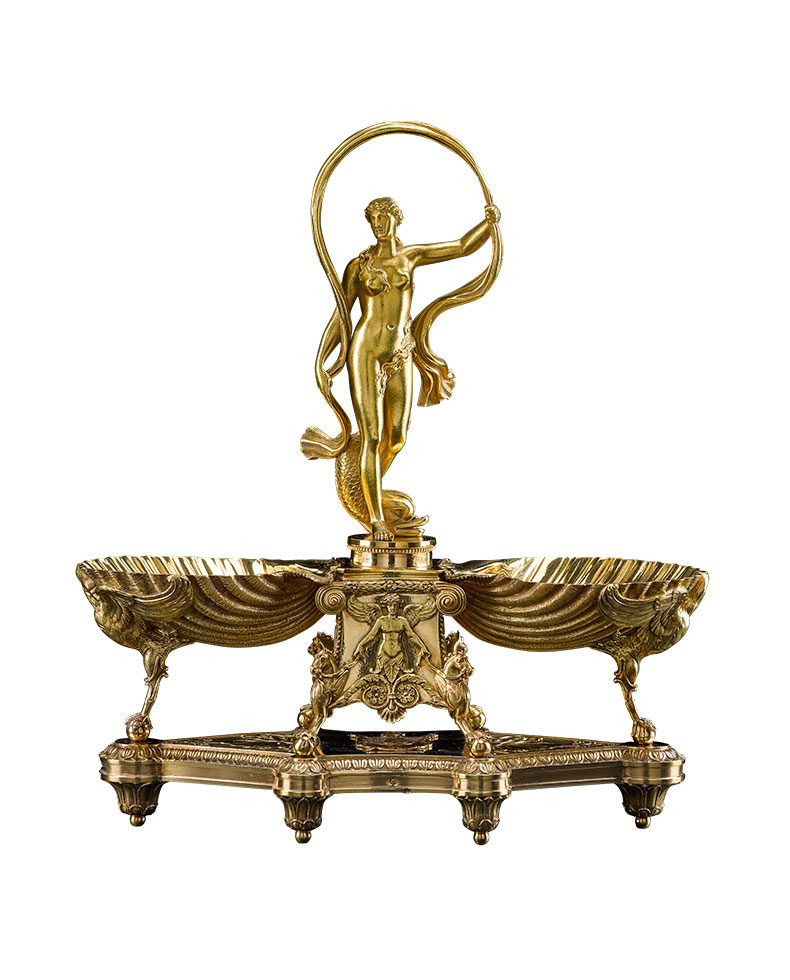
Silver-gilt double salts (1809). Courtesy the National Museum of Scotland.
1. Tea service of the Emperor Napoleon
National Museum of Scotland, Edinburgh
This pair of silver-gilt double salts is part of a tea service that was made for Napoleon and his second wife, the Archduchess Marie-Louise of Austria, shortly after their wedding in 1810. Many of the pieces were designed by Napoleon’s architect, Charles Percier. As a love token, this piece is topped with the figure of Venus. To find out more click here.
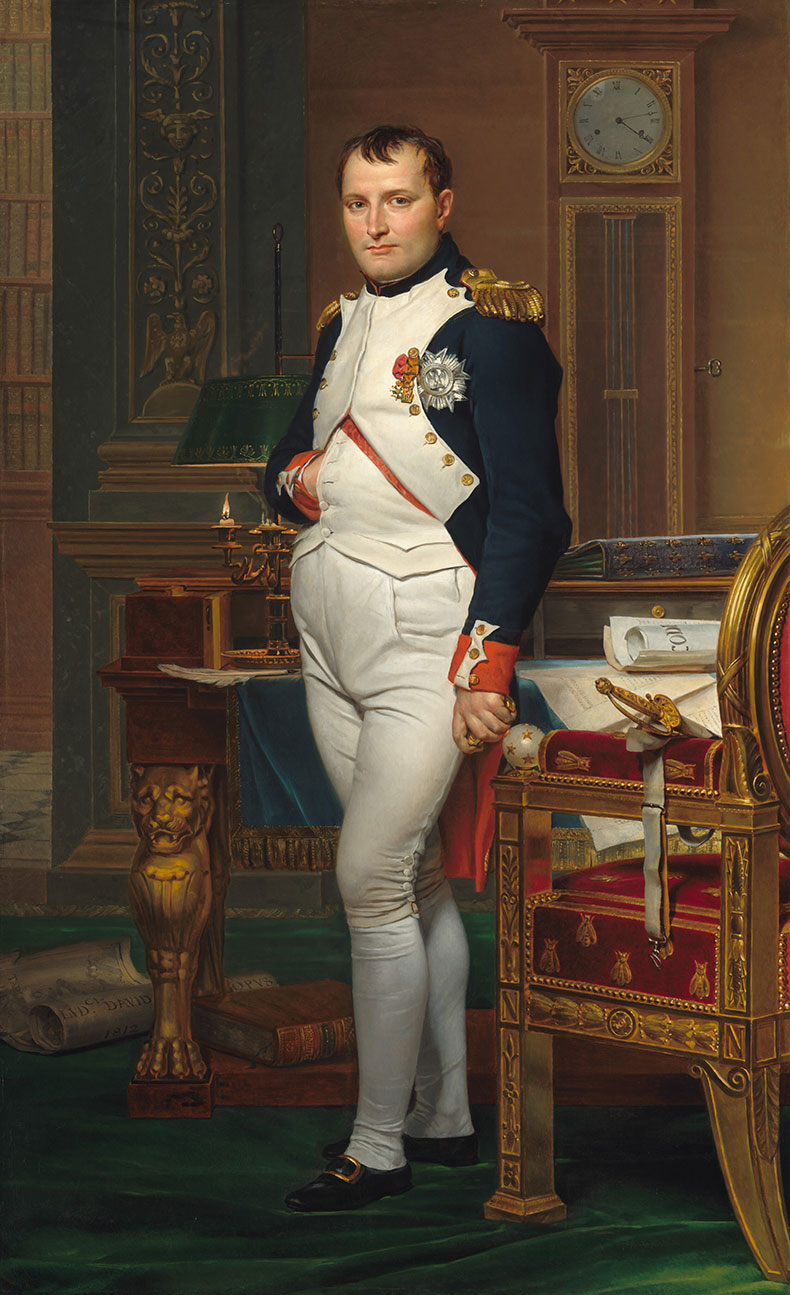
The Emperor Napoleon in His Study at the Tuileries (1812), Jacques-Louis David. National Gallery of Art, Washington.
Samuel H. Kress Collection.
2. The Emperor Napoleon in His Study at the Tuileries (1821), Jacques-Louis David
National Gallery of Art, Washington, D.C.
While the composition was designed to suggest that Napoleon had spent the night in his study composing the Napoleonic Code — a civil code that still exists in France — really this is a painting that is all about power. The gilded throne-like chair, the ornate writing desk and military costume show that Napoleon is a figure to be reckoned with. To find out more click here.
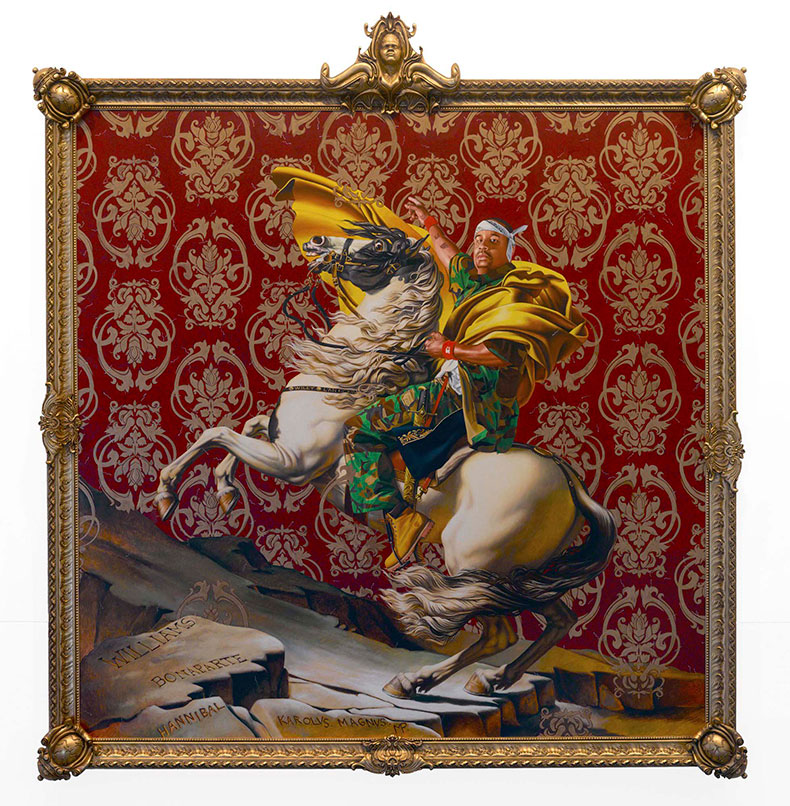
Napoleon Leading the Army over the Alps (2005), Kehinde Wiley. Brooklyn Museum, Partial gift of Suzi and Andrew Booke Cohen in memory of Ilene R. Booke and in honor of Arnold L. Lehman, Mary Smith Dorward Fund, and William K. Jacobs, Jr. Fund , 2015.53; © the artist
3. Napoleon Leading the Army over the Alps (2005), Kehinde Wiley
Brooklyn Museum, New York
This painting is part of Wiley’s Rumours of War series, which comprises four monumental portraits that reinterpret historical representations of military leaders on horseback. This work takes David’s Bonaparte Crossing the Alps as its starting point, replacing the heroic figure of Napoleon for a Black man wearing camouflage trousers and Timberland boots. Click here to find out more on the Bloomberg Connects app.
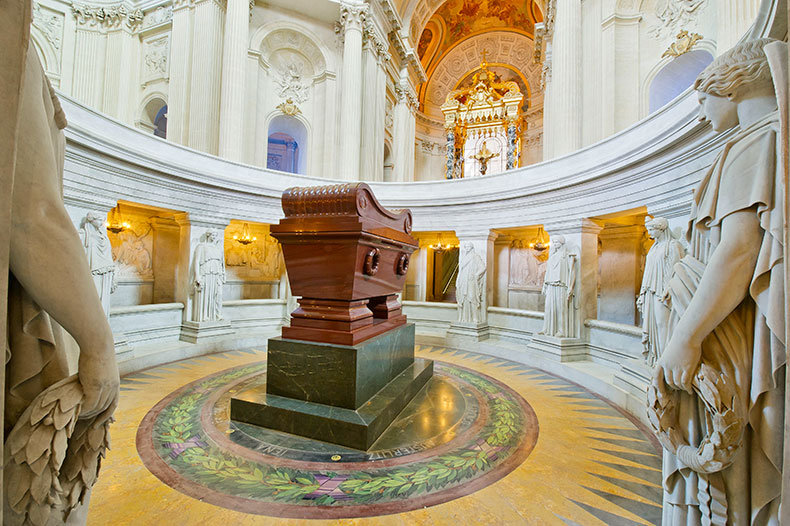
The tomb of Napoleon Bonaparte at Les Invalides, Paris. Photo: Emilie Cambier
4. Napoleon’s Tomb
Musée de l’Armée, Paris
After his death in 1821, Napoleon was buried on Saint Helena island. Nearly two decades later King Louis-Philippe of France decided to have his remains transferred to Les Invalides in Paris. The body of Napoleon was finally laid to rest in the Dome on 2 April 1861, where it still sits today. To find out more click here.
Download now
![]() ‘4 things to see this week’ is sponsored by Bloomberg Connects, the free arts and culture app. Bloomberg Connects lets you access museums, galleries and cultural spaces around the world on demand. Download the app here to access digital guides and explore a variety of content or scan the QR code.
‘4 things to see this week’ is sponsored by Bloomberg Connects, the free arts and culture app. Bloomberg Connects lets you access museums, galleries and cultural spaces around the world on demand. Download the app here to access digital guides and explore a variety of content or scan the QR code.

Unlimited access from just $16 every 3 months
Subscribe to get unlimited and exclusive access to the top art stories, interviews and exhibition reviews.


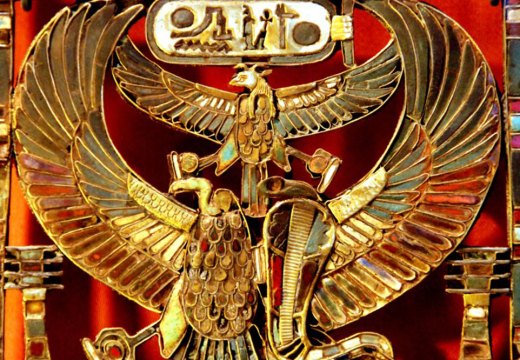
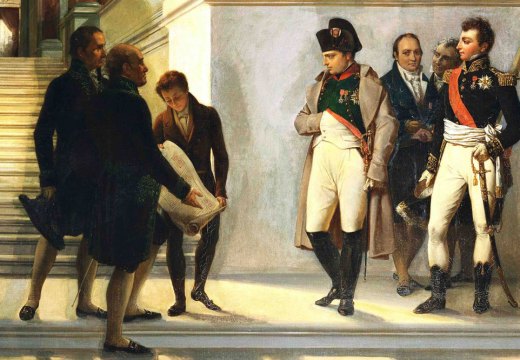
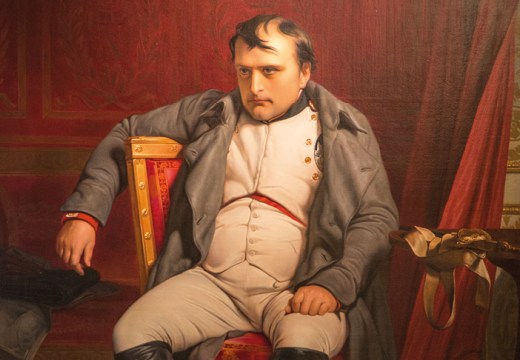









![Masterpiece [Re]discovery 2022. Photo: Ben Fisher Photography, courtesy of Masterpiece London](http://www.apollo-magazine.com/wp-content/uploads/2022/07/MPL2022_4263.jpg)
It’s time for the government of London to return to its rightful home